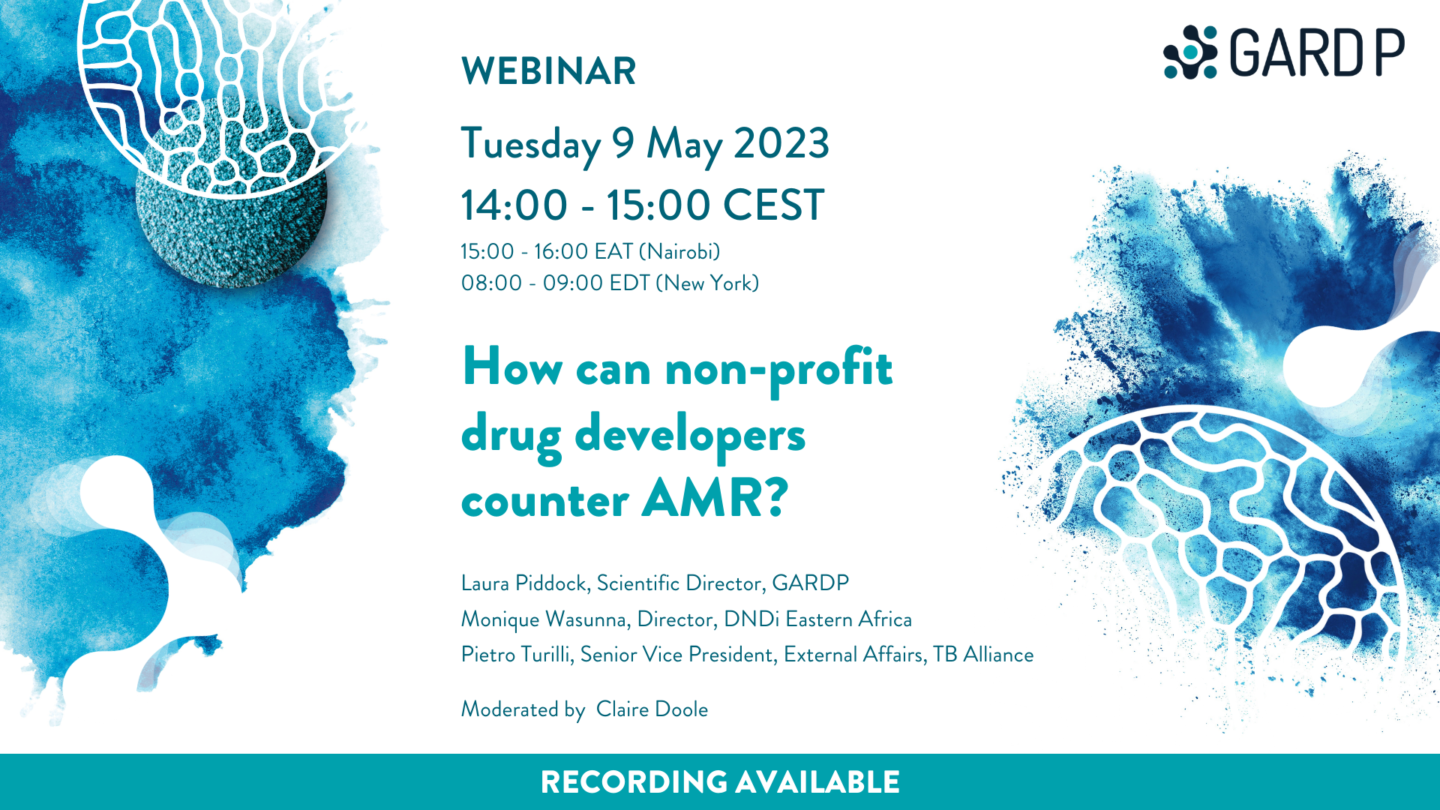Webinar – How can non-profit drug developers counter AMR?

Antibiotics underpin modern medicine and are critical for pandemic preparedness. Push funding has revitalized the preclinical anti-microbial resistance (AMR) pipeline and government funding via CARB-X and BARDA, as well as private sector–led investment via the AMR Action Fund, will help several new antibiotics obtain regulatory approval. Nevertheless, revenues generated by new antibiotics are not considered sufficiently profitable by commercial developers to address unmet need. The question remains: Who could viably fund development and secure global equitable access for new antibiotics? Public health need should be the primary driver for antibiotic development. Improved prioritization and government oversight by funders who allocate public resources are a needed first step. In this framework, nonprofit research and development organizations (like GARDP), with support from public funders, and unconstrained by commercial profitability requirements are well positioned to work with public and private actors to viably provide new antibiotics to all in need.
Since 2010, nonprofit developers have developed and introduced 66 new health technologies for priority public health needs, reaching more than 2.4 billion people worldwide (including vulnerable populations) and include new treatments for TB and neglected tropical diseases (NTDs).
Despite drug-resistant infections and NTDs being urgent public health priorities for many countries, there are insufficient commercial returns to sustain private R&D investment. The successes of nonprofit collaborative R&D organizations should encourage those vested in revitalizing the antibiotic pipeline. Nonprofit collaborative approaches, which are the basis of organizations like GARDP, could be a basis for sustained investment and action.